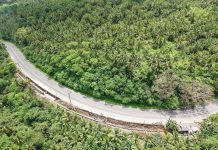Boy dies, 43 others fell ill
TACLOBAN CITY- A six-year old boy died while 43 others were downed after eating ‘tahong’ or green mussels in Catbalogan City, raising alarm from the Bureau of Fisheries and Aquatic Resources (BFAR) as it reiterated that red tide toxins are still up in several bays in the region.
The young fatality was identified as Froilan Basal from Barangay Pupua, Catbalogan City who died on Tuesday (Sept.19) while being confined at the Samar Provincial Hospital(SPH) in Catbalogan City.
His father, Alejandro,33, and siblings, Analiza(13), Analiza (13), Angelyn(9) and Ariane(5) are now declared safe.
The family ate tahong on the night of September 18 and hours later, experienced severe vomiting, stomach ache, and numbness.
Except for the father, the children were admitted to the provincial hospital with Froilan declared dead while being treated.
The red tide toxin has been declared present in several bays in Samar by the BFAR as it issued warning against gathering and eating of all kinds of mussels from these affected bays.
BFAR had earlier declared the bays of Irong-Irong Bay, Villareal Bay and coastal waters of Daram Island, all in Samar; Matarinao Bay in Eastern Samar and Carigara Bay in Leyte positive for paralytic shellfish poison.
BFAR has said that about 33 residents of Brgy. Mual-Bual in Zumarraga were confined at the SPH on Sept.19 but were discharged.
Meantime, two residents of Catbalogan, three from Pinabacdao and one from Jiabong, remain confined at the SPH, BFAR reported.
They were brought to the said hospital on Sept.19.
Cristine Gresola, information officer of BFAR, said that four residents of Pinabacdao and one from Jiabong, who were downed by red tide toxin, were brought to the Eastern Visayas Regional Medical Center (EVRMC) for treatment.
“We are still monitoring bays here in Samar for the presence of red tide toxin,” Gresola said.
Declared free from red tide toxins are the bays of Cambatutay Bay in Samar; San Pedro and Cancabato Bays in Leyte; coastal waters of Calubian and Leyte town, Leyte; and coastal waters of Biliran.
By: JOEY A. GABIETA/
RESTITUTO A. CAYUBIT



